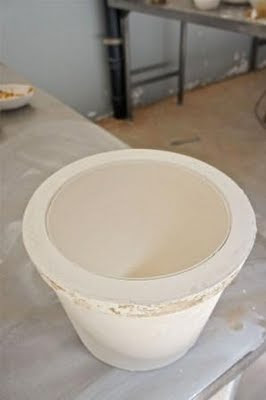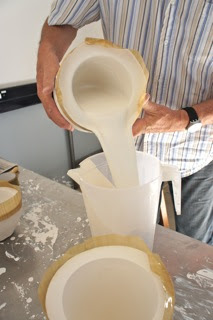Here I am showing the casting process I use to make my Bone China vessels which are later decorated with
soluble salts before being fired to vitrification. Thanks to
Eugene Hon for the images.
All my moulds are one piece drain moulds made from a
paperplaster mix. Instead of the conventional Plaster of Paris spare I use a wide adhesive tape which I place around each mould before casting
Before each session of casting the slip is well stirred and then passed through a small sieve to remove any lumps and to ensure thorough mixing
The slip is then poured, again through the small sieve into the moulds, where it is left to cast for 60 - 90 seconds
Once the cast has sat for the required time the mould is emptied
And the adhesive tape removed. After draining inverted for about 10 minutes the mould is set upright and the top is trimmed after a further 10 minutes. The pieces are left in the mould overnight and removed the following day.













